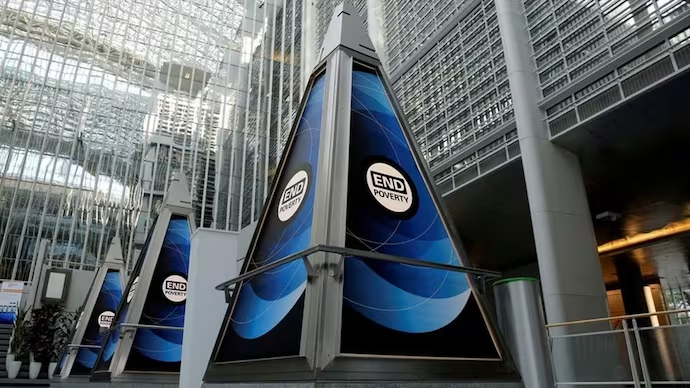Free Courses Sale ends Soon, Get It Now


Free Courses Sale ends Soon, Get It Now



Copyright infringement not intended
Picture Courtesy: https://www.indiatoday.in/environment/story/world-bank-seeks-more-funds-to-address-climate-change-other-crises-2316801-2023-01-03
Context: A World Bank delegation visited Goa to discuss setting up India's first sub-national climate resilient green fund.
Key Highlights
|
The World Bank is the biggest multilateral funder of climate investments in developing countries. The World Bank collaborates with the Green Climate Fund (GCF), the world's largest dedicated climate fund, in various ways: ●Acting as a trustee: The World Bank serves as a trustee for the GCF, managing its trust fund and providing administrative support. ●Implementing GCF projects: The World Bank acts as an accredited entity for the GCF, implementing some of its projects in developing countries. ●Partnerships: They collaborate on specific projects and initiatives to leverage expertise and resources for greater impact. |
About Green Climate Fund (GCF)
Goal
Target Audience
Investment Areas
Approach
Key Principles
Challenges
Way Forward
Conclusion
|
PRACTICE QUESTION Q. Despite the Green Climate Fund (GCF) being the world's largest dedicated climate fund, some critics argue its impact on global emissions reduction has been limited. How can the GCF measure and demonstrate its effectiveness in achieving real-world climate outcomes, beyond just project completion and disbursement of funds? Answer Structure: ●Start by briefly introducing the Green Climate Fund (GCF) and its role as the world's largest dedicated climate fund. Highlight the criticism that despite its size, some argue its impact on global emissions reduction has been limited. ●Discuss the importance of moving beyond project completion and fund disbursement to evaluate the real-world impact on climate outcomes. ●Emphasize the need for robust monitoring and evaluation mechanisms to track emissions reductions resulting from GCF-funded projects. ●Discuss the importance of evaluating the effectiveness of GCF in building climate resilience and adapting to the impacts of climate change. ●Advocate for a comprehensive impact assessment that considers not only project-specific outcomes but also broader systemic changes resulting from GCF interventions. ●Summarize the key points and reiterate the importance of measuring the real-world impact of the GCF beyond mere project completion and fund disbursement. |
© 2024 iasgyan. All right reserved